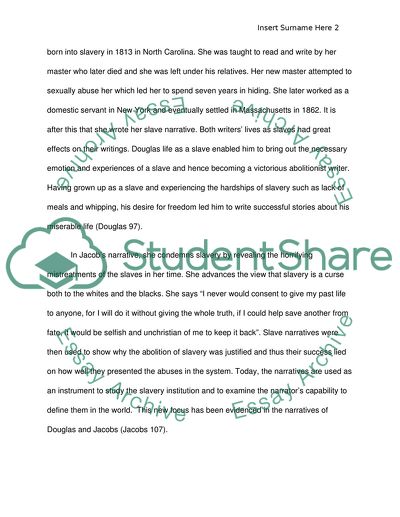Cite this document
(Slave Narratives of Frederik Douglas and Harriet Jacobs Assignment, n.d.)
Slave Narratives of Frederik Douglas and Harriet Jacobs Assignment. Retrieved from https://studentshare.org/literature/1546016-comparing-and-contrasting-the-slave-narratives-of-frederick-douglass-and-harriet-jacobs
Slave Narratives of Frederik Douglas and Harriet Jacobs Assignment. Retrieved from https://studentshare.org/literature/1546016-comparing-and-contrasting-the-slave-narratives-of-frederick-douglass-and-harriet-jacobs
(Slave Narratives of Frederik Douglas and Harriet Jacobs Assignment)
Slave Narratives of Frederik Douglas and Harriet Jacobs Assignment. https://studentshare.org/literature/1546016-comparing-and-contrasting-the-slave-narratives-of-frederick-douglass-and-harriet-jacobs.
Slave Narratives of Frederik Douglas and Harriet Jacobs Assignment. https://studentshare.org/literature/1546016-comparing-and-contrasting-the-slave-narratives-of-frederick-douglass-and-harriet-jacobs.
“Slave Narratives of Frederik Douglas and Harriet Jacobs Assignment”, n.d. https://studentshare.org/literature/1546016-comparing-and-contrasting-the-slave-narratives-of-frederick-douglass-and-harriet-jacobs.


